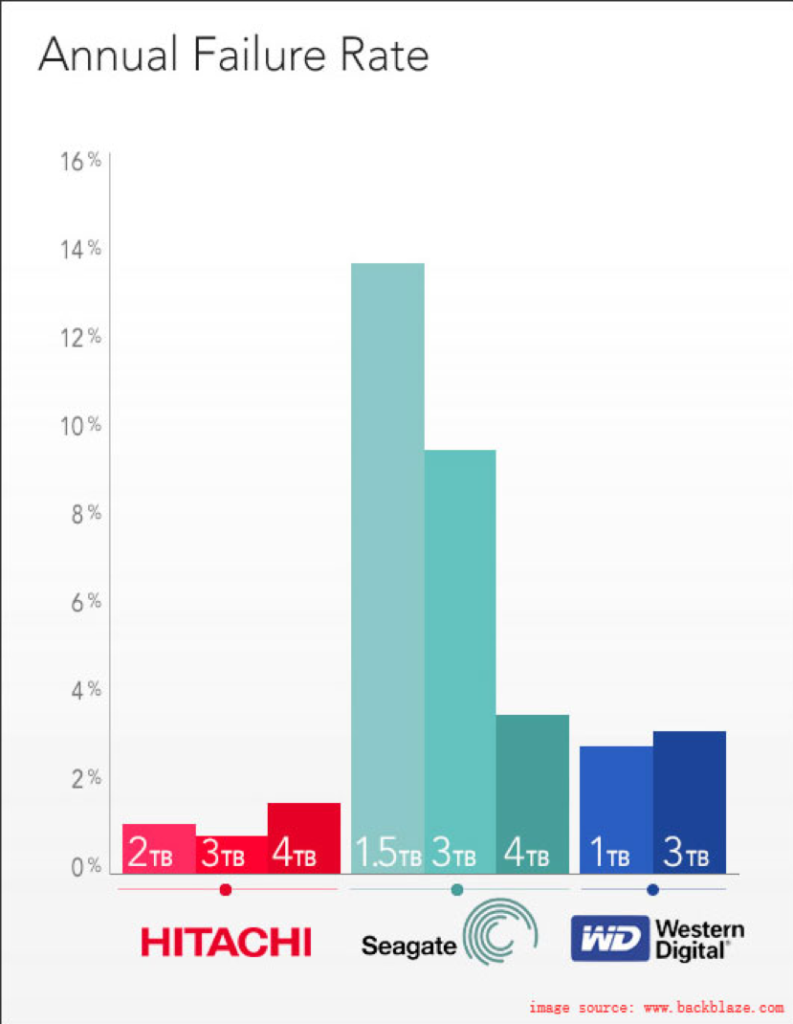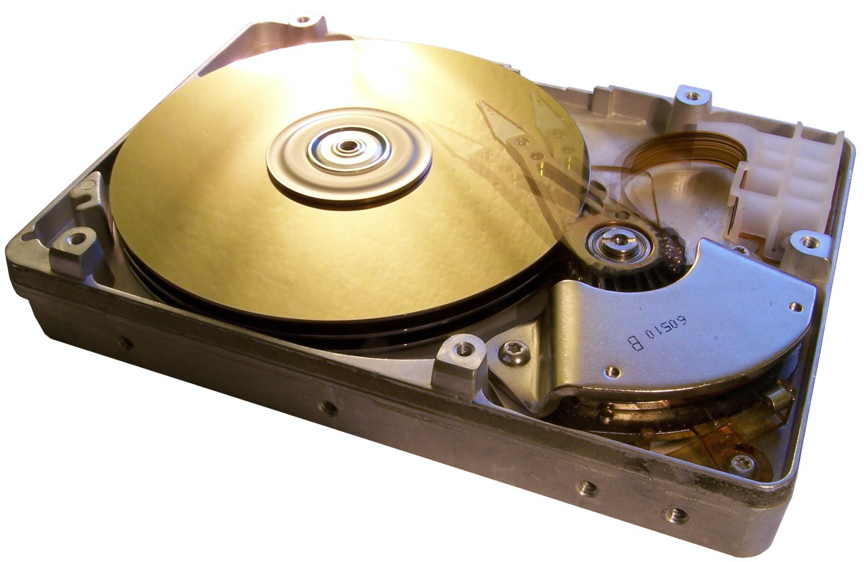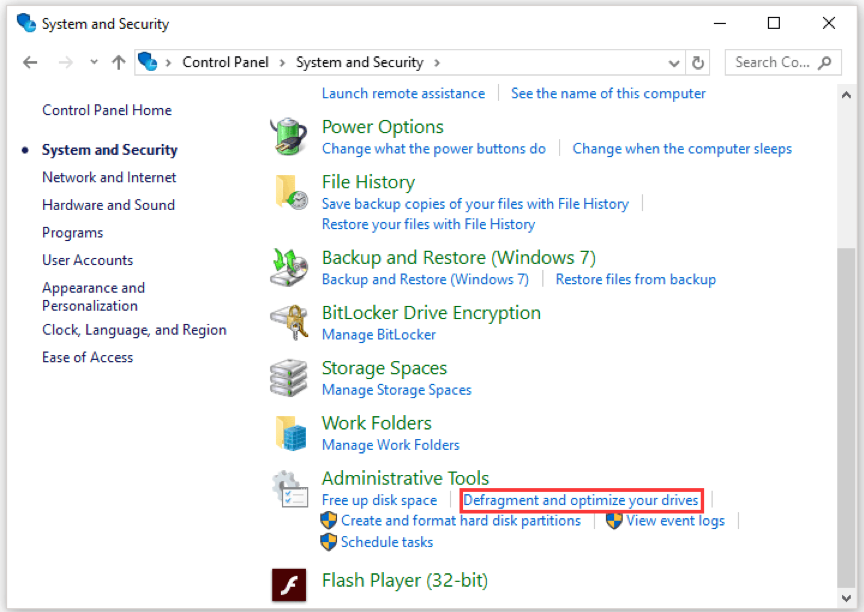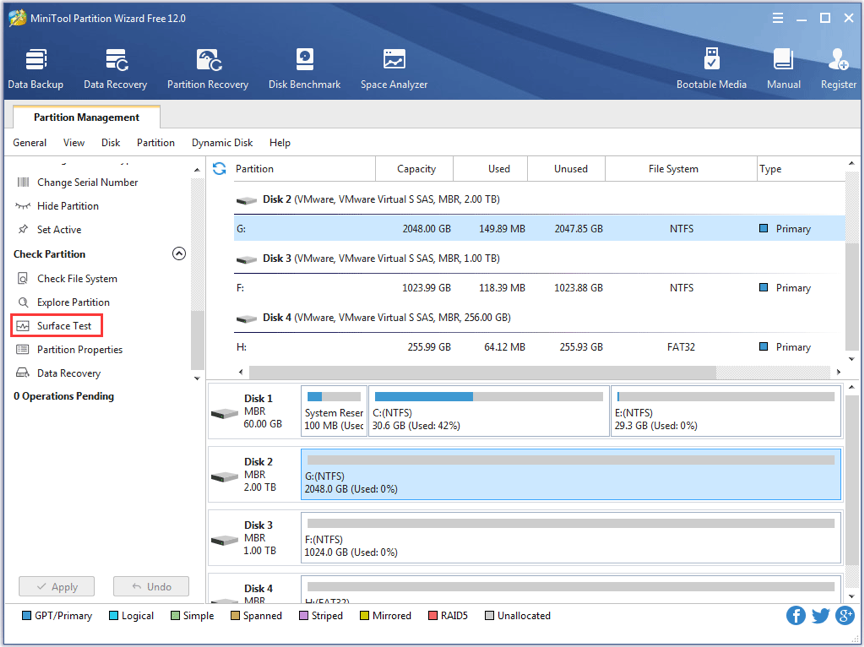Contents
As external hard drive is an important asset for your computer to store numerous of images and videos, you may focus on the performance of it. After all, if your external hard drive fails to work prematurely, that’s must be a terrible experience.
However, nothing lasts forever. External hard drives are not the exceptional. How long can you use an external hard drive? What should you do to extend the life of external hard drive? If you are thinking these questions now, you’ve come the right place as all answers can be found in this post.
Determining Factors to External Hard Drive Lifespan
How long an external hard drive will be used, forever? Of course not. In general, an external hard drive can be used for 3 to 5 years, which depends on its own characteristics (like band, configuration and size) how you use it.
What are the factors that affect an external hard drive lifespan? Let’s go to keep reading on.
Brand
The brand of external hard drive makes difference. Some famous brands we can see frequently are WD (Western Digital), Toshiba, Seagate, Hitachi, SanDisk, Samsung and so on.
Among these brands, WD and Toshiba have good quality. Hitachi is always reported to be guaranteed. Seagate is cheap. But it is less reliable as it failed more frequently than others. Here is a comparison given by Backblaze.

From this report of Backblaze’s tests, you can see the failure rate of each brand. It can be a reference when you purchase an external hard drive.
Configuration
The way of external hard drive working is using a mechanical arm with read/write head to read information from source place. So, the lifespan relies on the wear degree of the mechanical structure.
Be careful when handling external hard drive, otherwise a slight drop can lead to great physical damage as the mechanical structure inside is complex and sensitive.
Size
It is hard to explain the relationship between hard drive size and hard drive lifespan. One user said on www.quora.com that capacity of 4TB and 6TB hard drives are more vulnerable, with 2.06% and 2.22% failure rate, respectively; as to 3TB and 8TB hard drives, they were found to be most dependable, with 1.40% and 1.60% failure rates, respectively.
Environment
The environment is also pretty important. Where do set the external hard drive? The environment, including dust, humidity and temperature matters to the lifespan of your external hard drive.
As we know dust is a killer to hard drive, especially external hard drive, as it is often exposed to dusty environment. When dust gets inside of the external hard drive and keep accumulating, the heat dissipation of electronic components will be affected.
Also, as external hard drive is usually exposed to air outside compared with the local hard drive, temperature and air humidity are also the threats to normal use of it. The temperature is too high or too low is bad for the circuit components, while the moisture could oxidize the internal components and result in a crash.
Tips for Protecting Your External Hard Drive
In this section, I will shard some useful methods to protect your external hard drive in order to extend the life of external hard drive. It’s worth having a look.
- Be gentle to it
As we mentioned in above section, the mechanical structure inside of external hard drive is fragile, being rough to it is a fast way to shorten its lifespan. Thus, lots of damage can be avoided if you treat it gently.
When your external hard drive is not in use, you’d better put it in a cool and safe place. If you need to carry it outside, please place it into a padded and clean bag. In a word, pay attention to these simple things. They may help you prolong the life of your hard drive.
- Do not move it when it is working
If you move the external hard drive when it is working, its head may hit the disk and lead to damage since the distance of magnetic head to disk surface is only a few microns. And do not shut off computer when the external hard drive is still working to avoid rub of head and platter.

Therefore, you should notice the indicator of the external hard drive when it is connecting to computer. Do not move it when indicator flashes fast.
- Eject it properly
If you want to remove the external hard drive from computer (before it turns off) safely, please follow these steps:
① Click the external hard drive icon on taskbar.
② Click the option Eject (+ external hard drive name).
③ When you see Safe to Remove Hardware, remove it.
- Don’t keep it overloaded
Do not keep your external hard drive filled with unnecessary files. Just delete the useless data as it stores too much to reduce wear.
- Defrag it periodically
Fragmentation happens when you save, delete or edit files on your external hard drive as time goes by. To improve performance of external hard drive, you are suggested to defrag it periodically.
Step 1: Click Start and choose Control Panel.
Step 2: Click System & Security > Defragment and optimize your devices under Administrative Tools.

Step 3: Click the target partition and hit Analyze.
Step 4: The report you get indicates whether you need to defrag your disk.
Step 5: Click Optimize if you determine to defrag it.
- Monitor its health regularly
In order to know the health condition of the external hard drive, you can make use of a professional disk manager – MiniTool Partition Wizard. With its feature Surface Test, you can scan the disk to detect bad sectors or other errors.
Moreover, with this toolkit, you can back up your computer to an external hard disk with ease.
Step 1: Connect your external hard drive to Windows computer.
Step 2: Download and install MiniTool Partition Wizard. Then, run it to get the main interface.
Step 3: Select the target external hard drive in the Disk Map and click Surface Test.

Step 4: Click Start Now to begin.
Step 5: As the scanning goes on, you can see the whole condition (good sectors marking as green while bad sectors marking as red). Then, you can take corresponding actions according to the results.
How to Do with Useless External Hard Drive?
If you have to stop using your external hard drive due to its aging, please deal with it carefully with 2 steps:
① Transfer data from it to another storage device. Or recover data if it has stopped working with a reliable data recovery program.
② You can destroy or wipe the disk permanently to avoid data leakage.
Conclusion
Reading here, you may know how to extend the life of external hard drive. It depends on comprehensive factors, including band, size, environment and way of use. So, you should take it with care and monitor its status regularly to safeguard it.
Meanwhile, it is necessary to back up the data in external hard drive and to other drives or in the cloud, and replace the old external hard drive, which is used for 5 years.
Hope this post will help you. Please share with us if you have ideas or questions about external hard drive lifespan by leaving your comments below.

